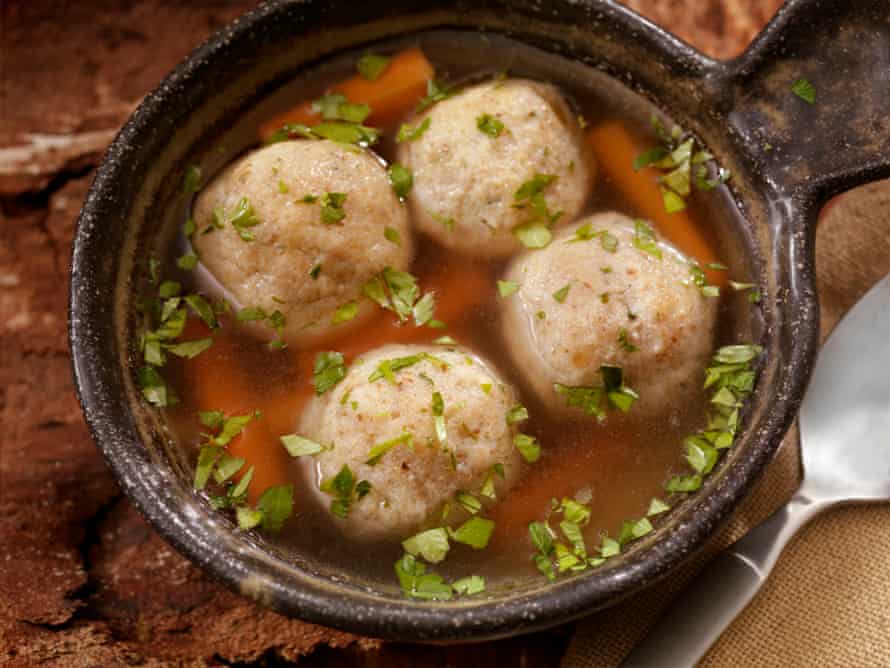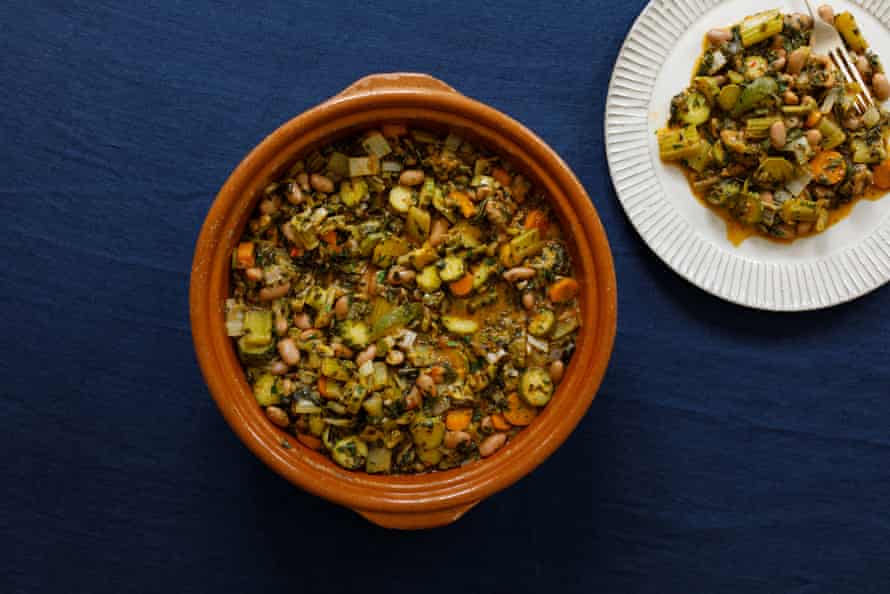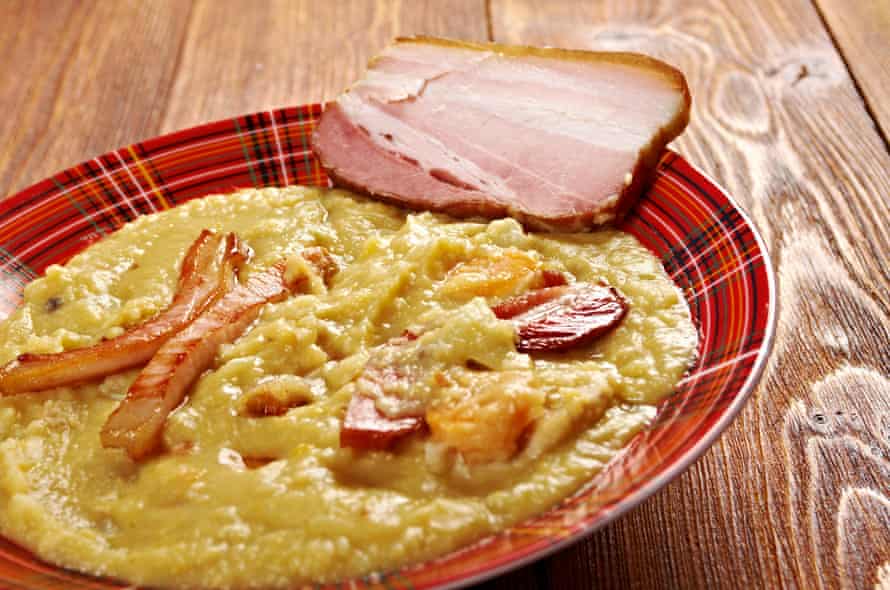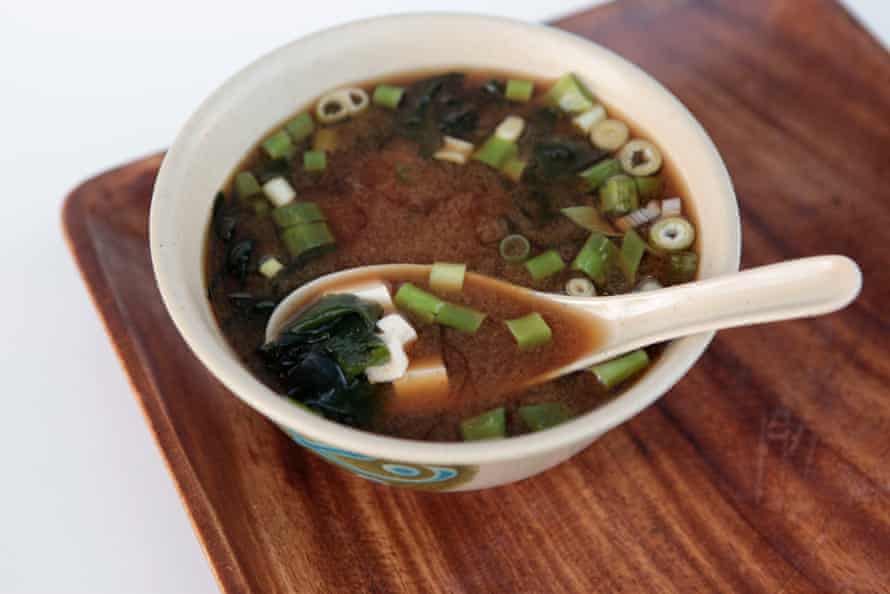It is cold, there is nothing to do – and you may want to hang on to all your tinned food in case things get even worse. This points towards one thing: getting really good at making soup. Although it can seem complicated and time-consuming, soup-making is immensely satisfying and much easier than you think. We asked 10 chefs to share their best recipes for the simple soups they make at home.
Curried carrot soup
Michael Caines, chef patron at Lympstone Manor, Exmouth
Put 150g of chopped onions, two peeled, crushed garlic cloves and 500g of peeled, chopped carrots into a saucepan with 150g of butter and a pinch of salt. Cook without colouring for five minutes. Meanwhile, toast a teaspoon of cumin seeds in a dry pan. Add the toasted cumin and a teaspoon of Madras curry powder to the vegetables and cook for a further two minutes, then add 300ml chicken stock, 500ml water and a bouquet garni. Bring to the boil, add a little more salt, then reduce to a simmer and leave to cook slowly for 30 minutes. Transfer to a blender and blend to a puree, then pass the puree through a sieve and return it to a clean pan to reheat. Check the seasoning and serve sprinkled with freshly chopped coriander leaves. Serves four.
Low-waste chicken soup
Gaston Savina, executive chef consultant, Cocotte, London

In a large pan, add aromatic veggies. Whatever you have left in your fridge works: this could be onion, garlic, carrots, celery or leek, but you can also add chilli, herbs or peppers. Season well before adding leftover chicken bones from, for example, a Sunday roast. Add water and simmer for at least a couple of hours; the longer, the better. Once you have done this, you have the base of your soup and you can add whatever you fancy – perhaps leftover chicken, vermicelli pasta or a soft-boiled egg. Alternatively, keep it simple and enjoy with a side of warm garlic-butter toast.
Matzah ball soup
Jessica Rosval, chef at Osteria Francescana, Modena, Italy

To make the broth, roast a leftover chicken carcass at 230C (210C fan)/450F/gas 8 until it is a deep, golden brown, then cover the bones with water and let it simmer, while being careful to scoop out the grey scum that starts to form on the broth. When the broth starts to boil, add vegetables (carrots, celery and onion are good) and herbs (parsley, dill, peppercorns, cloves) and simmer for two to three hours. Strain, taste and season.
To make the matzah balls, whisk 90g of chicken schmaltz (rendered chicken fat, or goose fat or grapeseed oil) with three eggs, using a fork, then mix in 90g of ground breadcrumbs and season. Refrigerate for 45 minutes, then lightly roll into 16 small balls (not too compact). Add the matzah balls to the finished broth, cover and cook slowly for 20 minutes. The balls will double in size. Add your choice of diced vegetables and cook together for a further 10 minutes, or until your vegetables are tender. Serve garnished with coriander. Serves five.
Jerusalem artichoke soup
Roberta Hall-McCarron, head chef and co-owner of The Little Chartroom, Edinburgh

Peel and chop a kilo of jerusalem artichokes, then sweat them down in a saucepan. Cover with two litres of chicken stock and simmer gently until the tubers are cooked. Add 200ml cream and bring to the boil. Strain off the liquid from the jerusalem artichokes and reserve, then put them into a blender and slowly add the liquid while blending until you get a smooth consistency. Season to taste. Serves four.
Norfolk Alpine cheese soup
Richard Bainbridge, chef owner of Benedicts, Norwich
In a saucepan, sweat down four chopped shallots in 70g butter. Then, add 200g of parmesan and 70g of gouda on a low heat, so it doesn’t burn, stirring continually. Add 200ml of double cream and 350ml of chicken stock, bring to the boil gently and mix thoroughly to ensure it is all incorporated. Next, pour into a blender and blend for a few minutes, before passing through a sieve. Check the seasoning and serve hot. If you would like to garnish it with crispy bacon and crispy shallots, dice some bacon and fry in a dry pan on a low heat, stirring occasionally. Meanwhile, slice the shallot thinly using a mandoline and heat vegetable oil in another pan to 180C. Pop out the rings, dust in seasoned flour, shake off any excess and fry until golden. Remove and dry on a kitchen towel, season with salt and pepper and chop into a fine crumb consistency with a sharp knife. Serves four.
Ribollita
Ollie Dabbous, chef patron at Hide, London

Chop two peeled carrots, half an onion, two sticks of celery, a head of fennel and a peeled potato into bite-sized, rustic pieces. Heat 50g of olive oil in a pan, add the vegetables, season and cook under a gentle heat for 10 minutes. Add a litre of boiling water and cook for another 10 minutes. While this is cooking, rip up a couple of slices of leftover bread, toss with 50ml of olive oil and toast at 180C (160C fan)/350F/gas 4 for 10 minutes, or until light golden in colour. Next, add four handfuls of chopped winter greens and two ripe chopped tomatoes to the soup and cook for 15 minutes. Add a small tin of butter beans and the bread and cook for another five minutes. Remove from the heat and stir in some black pepper, another 50ml of olive oil and any herbs (sage, thyme, rosemary or basil would all be delicious, but stick to one type). Serves four.
Sweet potato soup
Dorian Janmaat, head chef at The Idle Rocks, Cornwall
Peel 300g of sweet potatoes, cut into large chunks and boil in salted water until soft. While the potatoes are cooking, heat 150ml of cream, 100g of butter and 300ml of milk over a medium heat with a pinch of nutmeg, Chinese five spice and turmeric. Strain the potatoes and transfer to a food processor with the cream mixture and blend until smooth. Serve with deep-fried sweet potato crisps: cut half a sweet potato into 1mm slices using a mandoline. Heat oil in a deep, heavy pan to 180C. Deep-fry the potato slices in the hot oil for 2-3 minutes, then drain on kitchen paper. Sprinkle with salt and reserve. Serves four.
Ärtsoppa
Jorjón Colazo, head chef at Aquavit, London

Ärtsoppa is a Swedish yellow pea soup. It is traditionally served on a Thursday, to prepare people for the Christian fast that begins on Friday, and is offered on midday menus across Sweden. This soup is also served with Skånsk senap (Swedish wholegrain mustard) and boiled potatoes.
Soak 500g of yellow peas overnight, or for at least 90 minutes, and drain. In a large pot, boil the soaked peas and 1.5 litres of vegetable broth for 20 minutes, removing any floating impurities from the surface. Add a chopped onion, a diced carrot and a ham hock (optional) and simmer over a medium-to-low heat for about an hour, or until the peas are soft and the ham is tender and starting to separate from the bone. The ärtsoppa is a thick soup. If you like the classic version, remove a cup of peas, puree them and mix again in the soup. Season it with salt and black pepper to taste and add marjoram and thyme. Simmer for a further 30 minutes. Serves five.
Gazpacho
Omar Allibhoy, owner of the Tapas Revolution restaurants and author of Tapas Revolution
Place eight quartered tomatoes, half a Spanish onion, a seeded red pepper, a seeded green pepper, a garlic clove and a quarter of a cucumber in a food processor, reserving a little of the red and green pepper, cucumber and onion for the garnish. Add 1tsp of cumin, 5tbsp of sherry vinegar, a slice of bread, some olive oil and about 200ml of water. Add a pinch of salt and blend until smooth. If you don’t like bits in your gazpacho, you can pass it through a sieve at this stage. Serve with a few ice cubes and garnish with the reserved pepper and cucumber, croutons and a few drops of olive oil. Gazpacho tastes so much better when prepared in advance – the night before, if possible. If you want to sieve it, wait until just before serving, as the flavour will be much more intense if it has been left overnight with all the bits in it. Serves six.
Miso soup
Loic Leguay, head chef at Bone Daddies, London

To make the dashi (stock), bring a litre of water and 6g dried shiitake mushrooms to the boil in a saucepan, then turn off the heat. Add 25g of bonito flakes and leave to cool for 15 minutes to infuse. Strain through a sieve, squeezing the flakes to extract the flavour. For the miso, shiro (white) and aka (red) miso are the most commonly used in soup. They can be used separately or mixed together, depending on what flavour you are looking for. Shiro miso has a short fermentation, so it is sweeter, while the aka miso has a stronger flavour. Heat the dashi and add the miso – you need roughly 10g miso for 100ml dashi. Serve, adding sliced spring onions, tofu or wakame (seaweed) as toppings. Serves four.
from Lifestyle | The Guardian https://ift.tt/2NjTjLr
via IFTTT

comment 0 Comment
more_vert